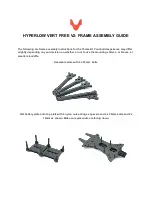
Drawing Number: 40955
Revision: NR
ECO#: 39372
OPERATION MANUAL FOR
FREE FIELD BLAST PRESSURE PROBE
Models 137B21X, B22X, B23X, B24X
2
Switch power on and observe reading of bias
monitoring voltmeter on front panel of signal
conditioner.
If indicator is in green section of indicator panel, the
IC amplifier is producing proper bias (8 to 14 VDC),
the cable connections are normal, and the system is
ready to operate.
If the pointer moves into the red area of the fault
monitor meter, output is zero and a short is indicated.
The short could be located in amplifier cable
connectors or power unit.
If the pointer moves into the yellow area of the fault
monitor meter, an open circuit is indicated with full
power supply voltage.
An open circuit could be the result of a faulty
amplifier, an open cable or open connectors. Check
to be sure connectors are properly mated. Some PCB
power units feature fault LEDs in place of a fault
meter. Instead of a pointer, the fault LED will light
when an open or short circuit condition is present.
Allow the sensor to thermally stabilize for about one
minute. A signal drift may occur when the cable is
connected to the readout instrument. This drift
occurs during charging of the coupling capacitor in
the power unit. The signal will stabilize in several
minutes. Proceed with measurements.
Most line-powered signal conditioners manufactured
by PCB have an adjustable current feature allowing a
choice of input currents from 2 to 20 mA. In general,
for the lowest noise (best resolution), choose the
lower current ranges.
In order to maintain a high frequency response of the
system when driving long cables (to hundreds or
thousands of feet), use a higher current, up to 20 mA
maximum. Use of low-capacitance cable (i.e. RG
62/U) and impedance-matching variable resistors are
suggested to improve long cable performance
characteristics. See Guide G-0001 for a discussion
on cable considerations.
3.1
POLARITY
The 137B2XX Series produces a positive-going
output voltage for increasing pressure output.
4.0
LOW-FREQUENCY RESPONSE
Consult Section 7.0 in General Guide G-0001 for
detailed explanation of low-frequency characteristics
of ICP
®
instrumentation.
5.0
CALIBRATION
Do not try to calibrate the Series 137B2XX statically.
The Series 137B2XX is calibrated dynamically by
PCB using a hydraulic pulse technique.
For best accuracy, use the calibration certificate
supplied. Factory recalibration is available for a
nominal charge.
6.0
MAINTENANCE
Although ICP
®
sensors have low-output impedance
and are not usually affected by moisture, in extremely
damp environments it may be well to protect cable
connections with shrink tubing.
It is well to observe the following precautions in
using the sensor:
1.
Do not exceed specified maximum range.
2.
Do not subject sensor to temperatures
exceeding temperature shown on specification sheet.
3.
Do not apply voltage to sensor without
current-limiting diodes or other current protection.
4.
Do not apply more than 20 mA of current to
the sensor.
Field repair of the piezoelectric element or amplifier
of the Series 137B2XX is not practicable. Thus,
should a sensor in this series require servicing, refer
to the warranty sheet.
CAUTIONARY NOTE: If sensors are left outside
overnight, they should be coated with silicone oil and
covered. The protective silicone oil or grease coating
should also be applied when the sensors are operated
in a humid or rainy environment.
®ICP is a registered trademark of PCB Piezotronics
Содержание ICP 137B21B
Страница 7: ......

























